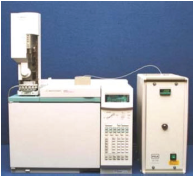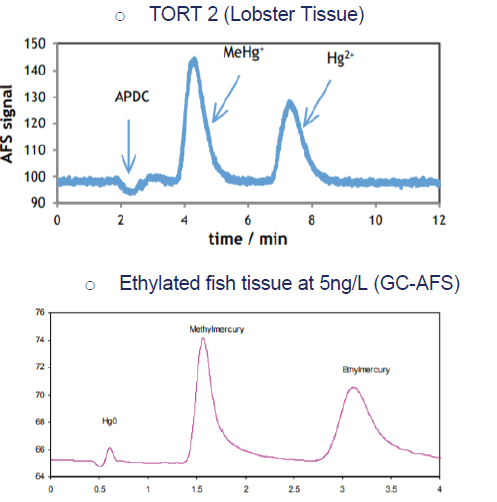USING ATOMIC FLUORESCENCE SPECTROMETRY FOR THE DETERMINATION OF MERCURY, ARSENIC, SELENIUM & ANTIMONY FROM FOOD, FEED AND BEVERAGE SAMPLES

The consumption of food and drink is one of the main sources of exposure to toxic metals. Selenium is an essential nutritional element and is often added as a supplement to food for health benefits. It is also an important element in animal feed to ensure livestock wellbeing.
Coupling Atomic Fluorescence Spectrometry (AFS) with either cold vapour generation or hydride generation has been PSA’s core competency for over 35 years. With the addition of analyte separation capabilities which allows for speciation studies, PSA offers powerful analytical tools to help contract laboratories, food & feed producers and regulators alike with these determinations. Food security has never been more important.
Atomic Fluorescence Spectrometry (AFS)
PSA systems offer ultimate detection performance, combined with ease of use and affordability.
- Millennium Merlin & Excalibur
(10.025 Total Hg - 10.055 Total As, Se, Sb, Bi & Te)

Key User Benefits:
- Wide dynamic range
- Low carryover – no flow cell
- Robust
- Easy to use and maintain
- Rapid return on investment
- Autosampler options
AFS Food & Feed Applications:
- Dairy
- Grains (rice, wheat etc)
- Fruit & Fruit Juice
- Vegetables
- Meat
- Fish & Shellfish
- Seaweed
- Animal Feed
AFS Speciation Studies
Toxicological properties of these elements critically depend on the form (species) in which they occur in food. As a result, trace element speciation, particularly for toxic trace elements, is nowadays considered of major importance to ensure food safety.
Topical examples include:
- The separation of methyl mercury from inorganic mercury in water, shellfish, seaweed, dairy products, vegetables and grains.
- The determination of inorganic arsenic from less toxic
organo arsenic species in water, rice, seaweed are
examples of routine applications developed for this
growing area of concern.
To increase the range of applications, including speciation studies we employ a configurable chromatographic front end; the Modular Interface (MI), which is equipped with LC pump, injection valve, UV cracker, heater and cooling modules. This simple interface couples directly to the Millennium Merlin or Excalibur for seamless speciation determinations.
-
Modular Interface (MI) 10.820

-
GC-AFS 10.725

Another option is to use capillary GC-AFS for mercury speciation analysis. Absolute detection limits of 0.2 pg are easily achieved for methylmercury and ethylmercury in a variety of food samples.
Speciation Applications
-
Mercury and Methyl mercury



-
Arsenic Speciation


-
Selenium Speciation


-
Antimony Speciation


HPLC-ICP-MS v HPLC- HG-AFS
The coupling of the ICP-MS with HPLC has a number of negative consequences for a busy laboratory:
- The system is tuned for single element analysis and in this configuration cannot carry out normal high-speed multi-element determinations.
- Speed of analysis is dependent on the chromatographic run times.
- Long run times consume large volumes of argon (20
and 30L/min). - Severe polyatomic interferences are common and
need to be managed carefully. - A dedicated technician is normally employed to
operate the HPLC-ICP-MS.
This article is contributed by P S Anlaytical.
Nexus Analytics is appointed as an exclusive distributor by P S Anaytical in Malaysia and Singapore. We have vast experience in trace metals, mercury & metalloids analysis and offer powerful analytical tools to help contract laboratories, research teams and regulators alike with these determinations.
Book a free demo with us now!
Please fill up the form below. Our team will contact you as soon as possible. Thank you
